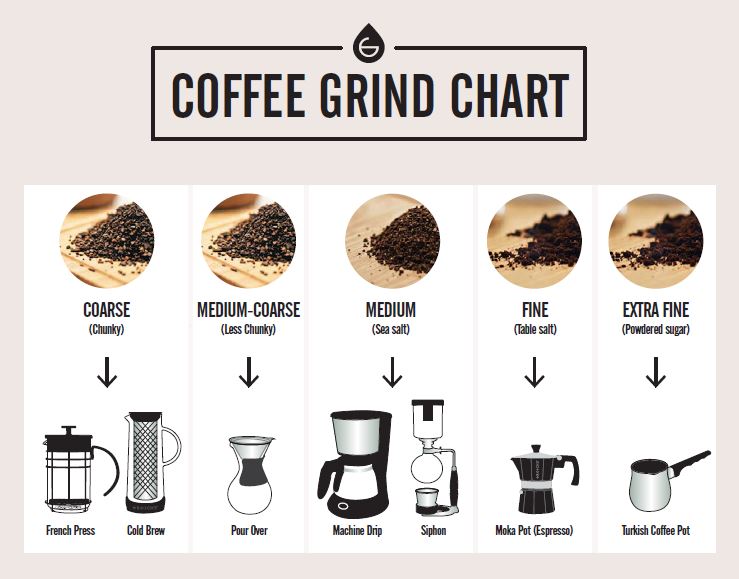When I first started making espresso at home, I quickly realized that grind size is just as crucial as the quality of the beans or the machine itself. The grind directly impacts the flavor and texture of the espresso, and after countless attempts, I've gathered some valuable insights on getting the grind just right. Discover the innovative features in the DeLonghi Magnifica Evo review
Espresso is cherished for its bold and concentrated flavors, but achieving that ideal shot requires precision across several factors: quality beans, a solid machine, optimal water temperature, precise pressure, and, importantly, the correct grind size. Too coarse or too fine, and you can end up with an unbalanced shot that's either too bitter or too sour. Learn about the timeless design in the DeLonghi Magnifica S review
So, what grind size will give you the perfect espresso shot at home? Let me share what I’ve learned on my journey. Explore our top picks in the Best Automatic Espresso Machine review
Why Grind Size is Essential
During the brewing process, hot water passes through the coffee grounds, extracting the flavors, aromas, and body that define the espresso experience. The grind size plays a critical role in determining how well the extraction occurs. Unlike brewing methods like French press or pour-over, espresso needs a very fine grind, but the key lies in finding the perfect balance. Find the perfect machine to beat the heat in the Best Iced Coffee Maker review
Too Coarse: The water flows too quickly, resulting in under-extraction and a weak, sour flavor.
Too Fine: The water struggles to pass through, leading to over-extraction and a shot that tastes bitter and overpowering.
Achieving the Perfect Grind
After much experimentation, I found that the ideal grind for espresso resembles fine sand. It shouldn't be as powdery as flour, nor as gritty as salt. When you rub the grounds between your fingers, it should feel textured, but still stick together slightly. Dive into the best options for making lattes in the Best Latte Maker review
Investing in a burr grinder is vital for consistency. Unlike blade grinders, which create uneven grounds, a burr grinder ensures an even grind, which leads to consistent extraction and ultimately a more balanced flavor in your espresso.

Adjusting the Grind for Your Espresso Machine
Every espresso machine has its own unique quirks, so adjusting the grind to match your specific machine is essential for great results. Here are a few general guidelines I follow:
Brews Too Quickly (<20 Seconds): The grind is likely too coarse.
Brews Too Slowly (>30 Seconds): The grind is probably too fine.
Personally, I aim for a shot that pulls between 25 and 30 seconds. Different coffee beans also require slight adjustments, so whenever I switch roasts, I tweak the grind settings to get it just right for that particular batch.
Tips for Maintaining Consistent Grind Quality
Consistency is key to crafting a perfect shot of espresso. Here are a few important factors I’ve found make a significant difference:
Fresh Beans: Using beans within two weeks of roasting provides the best flavor and crema.
Tamping Technique: Apply even pressure when tamping the grounds. This ensures the water flows evenly, avoiding issues like channeling, where water passes through certain areas more quickly, leading to uneven extraction.
Measuring Your Dose: Using a coffee scale for accuracy is a game-changer. I usually use between 18-20 grams of coffee for a double shot, which helps me achieve consistent results.
Experimenting With Grind Sizes for Unique Flavor Profiles
While a fine grind is typically used for espresso, there’s always room for experimentation, especially when it comes to personal taste preferences. Adjusting the grind slightly can help unlock new flavor notes.
Lighter Roasts: A slightly coarser grind can help balance the acidity and highlight sweetness.
Darker Roasts: A finer grind can enhance the rich, chocolatey, and roasted notes.
Common Mistakes to Avoid
Over time, I’ve learned to avoid some common mistakes that can easily ruin a potentially great shot:
Grinding Too Early: Coffee begins losing its freshness soon after grinding, so I grind only what I need right before brewing.
Neglecting Grinder Maintenance: Regular cleaning prevents old grounds and oils from affecting the taste of your espresso.
Ignoring Roast Dates: Beans are at their best within one to two weeks of roasting. Even if you get the grind perfect, stale beans will always produce a dull, flat shot.

Conclusion: Mastering Home Espresso
Perfecting the grind for home espresso is a gratifying process that takes time, practice, and patience. Great espresso starts long before you pull the shot—it involves choosing quality beans, dialing in the right grind, and refining every step of the process.
With dedication, I’ve managed to make espresso at home that rivals the quality of my favorite cafes. There’s something incredibly rewarding about the craft and savoring a rich, flavorful shot in the comfort of your own kitchen.
For anyone on the journey of home espresso, I encourage you to embrace the trial and error. Adjust your grind size, observe how your machine responds, and learn from each shot you brew. In time, you’ll master the art and enjoy consistently great espresso, perfectly suited to your taste.
